Module 13: Non Timber Forest Products: Growing Opportunities
Lesson Seven - Other NTFPs
Woodland owners in Nova Scotia hold the wealth of nature at their fingertips. The number of potential NTFPs in the province is vast. Nearly every plant and animal, every view and recreational activity has a value to someone, although these values may not always be economic.
Specialty wood products
According to some woodworkers, a large amount of very desirable material is left in the forest after logging. Defects in hardwood trees, created by tree growth characteristics, insects, fungi and storm damage, result in unique patterns in the grain of the trees. One of the most sought-after patterns in sugar maple is called birds-eye, which has a reputation for beauty when made into wood products.
Other attractive patterns in wood are the result of spalting, which is an interaction between wood and fungi. "Tiger" and "curly" grained woods are also highly sought out.
With the increase in activity by the "baby-boomer" generation, walking sticks have become popular. There are many different shapes and sizes, and some walking sticks are custom-made to the buyers' specifications. Elaborate carvings, wood laminates and exquisite finishes all add value to walking sticks. Some have become collectors items and demand high prices.
Woodworkers and turners are always on the lookout for wood burls. These are defects in the growth of hardwood trees, and can occur on the trunk or branches. Burls exhibit interesting shapes and patterns of wood grain. These parts of a tree are often discarded during harvesting operations, but can be valuable if the right buyer is found.
A conscious movement away from plastic products in developed countries has created a demand for wood furnishings, personal items and even toys. Wood is seen to be stable, non-toxic and pleasing to the eye. It also has the appearance of being custom-made, whether it is or not. Innovative craftspeople have taken advantage of this market and are constantly on the lookout for unique woods.
Landscaping materials
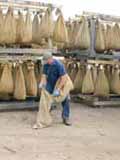 |
|
Storing seed
|
The housing market has created a need for affordable landscaping that will increase property value and be appealing to the eye. Contrasting shapes and colours of plants are often recommended by landscape architects. Some owners are choosing to create "garden forests" and wish to replicate the wildness of the woods in their backyards, complete with edible and medicinal plants.
The diversity of Nova Scotia's forests contains many of the elements that landscapers are seeking. Small businesses that cater to the landscaping needs of homeowners have been created. These enterprises purchase and sell native forest plants, including trees, and are always on the lookout for seeds and landscaping materials. They will purchase seeds of nearly every tree species, and cuttings or growing stock of many other plants. Nurseries, too, will sometimes buy native plants and seeds for growing their own stock. There is even a market for mosses and lichens.
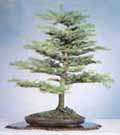 |
|
Bonsai larch
|
Bonsai
Popular in Oriental cultures and with hobbyists around the world, bonsai is the art and craft of growing carefully trained potted trees. In most cases these trees are tiny, but may be many years old.
The process of dwarfing trees by root and stem pruning is a slow one, and bonsai can be sold to buyers who collect them.
Trees that may be suitable for bonsai and which are native to Nova Scotia include white spruce, black spruce, larch and others.
Credit for carbon
A word should be said about the potential values of carbon on your woodlot. It is common to hear of climate change in the news, and it is believed that one of the causes of climate change is the increase of carbon in the atmosphere due to deforestation and the burning of fossil fuels. Much of this carbon is in the form of carbon dioxide (CO2).
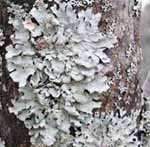 |
|
Storing seed
|
Everything that is living in the forest contains carbon, including trees. Vigorously growing trees absorb CO2 from the air during photosynthesis and can store the carbon for long periods in their wood, bark, leaves, needles and roots. This removal of CO2 from the atmosphere is important because 80 % of greenhouse gas (GHG) emissions from developed countries is in the form of CO2.
What does this have to do with your woodlot? In February 2005 the very first legally binding international treaty on the environment - the Kyoto Protocol - came into effect. The treaty was an agreement among several dozen countries to significantly reduce GHG emissions. The agreement indicated that reducing emissions can be done by cutting back on the release of GHGs, and by removing carbon from the atmosphere faster than it is being released. It was agreed that one of the ways of removing carbon from the atmosphere and "tying it up" is by storing carbon in forests.
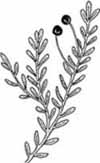 |
|
Cranberry
|
Companies (or countries) that emit less than their legal limit of GHGs can sell or barter "credits" to those companies that do exceed the limit. For example, if a company emits less GHGs than its limit and also plants several thousand trees, it will receive credits for its actions. It may then sell these credits to a company that needs them to reduce its own GHG (carbon) "footprint".
Companies may be looking to invest in these carbon credits to offset their emissions. A woodlot, as stored carbon, may be worth money to a company that needs credits. An agreement between the company and the woodlot owner can usually be reached, in which the owner agrees not to liquidate (harvest) the stored carbon in the trees for a certain length of time. This credit is of value to both the woodlot owner and the company, and can be regarded as an NTFP.
Wildlife as an NTFP
Nova Scotia has a long history as a province that is rich in wildlife. Forests that are high in diversity are able to support a wide range of birds, mammals and fish. Traditionally, wildlife has played an important role in the survival, culture and recreation of Nova Scotians. The use of wildlife as a "product" can be broken down into two categories: consumptive uses and non-consumptive uses.
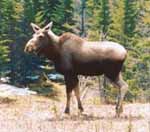 |
|
Moose
|
Consumptive uses include trapping, hunting and fishing, all of which have occurred in Nova Scotia for thousands of years. They continue today, and have an economic value to the people of the province.
These activities can be important on a local scale, with some communities relying on them for sustainability. As with any NTFP, good stewardship of these resources is vital to their future health.
Non-consumptive uses of wildlife are harder to define. Many people enjoy viewing wildlife, and may travel to Nova Scotia for this purpose. Birdwatching is a popular hobby. Catch-and-release fishing is another example of a non-consumptive use of wildlife. Eco-tourism and outfitting companies are found throughout the province, hosting adventure travellers and sporting enthusiasts for a price. These businesses can bring a welcome injection of money to the local economy.
For some, getting away from it all is essential for their well-being. Lodges and camps provide accommodation for those people who wish to stay longer in the outdoor environment. Retreats and nature camps are popular venues for those who seek a more intimate setting.
